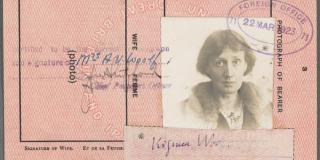
Jacob’s Room holograph draft
Virginia Woolf (1882–1941)
Jacob’s Room holograph draft
April 15, 1920–March 12, 1922
About three months after she developed the idea for Jacob’s Room, Woolf embarked upon the draft. On a preliminary page of this manuscript, she reflected: “I think the main point is that it should be free. Yet what about form? Let us suppose that the Room will hold it together. Intensity of life compared with immobility.”
Jacob’s Room—a novel nearly devoid of plot that’s driven by other characters’ impressions of the titular Jacob—was the first of Woolf’s novels to break with conventional narrative techniques, and she labored over how to structure the book effectively. The “Room” that Woolf devised to “hold it together” is an empty space filled with clues to Jacob’s life, just as the different characters’ impressions of Jacob are clues to the empty space that is his character.
: Henry W. and Albert A. Berg Collection of English and American Literature
Users of the website may make copies of the Work under general copyright exceptions, but may not further copy, share or adapt the Work. You may not use the material for commercial purposes. Please credit the copyright holder when reusing this work.






